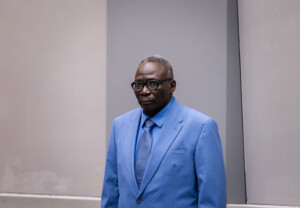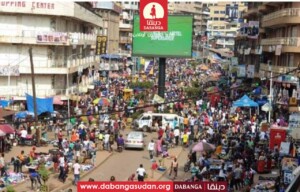Sudanese-Ethiopian border reopens for trade
Three border crossings between Sudan’s Blue Nile state and Ethiopia were officially re-opened on Friday, marking the resumption of trade exchange and border relations between the two countries.
 Mangoes are brought to the market in El Gedaref (Jay Kannaiyan)
Mangoes are brought to the market in El Gedaref (Jay Kannaiyan)
Three border crossings between Sudan’s Blue Nile state and Ethiopia were officially re-opened on Friday, marking the resumption of trade exchange and border relations between the two countries.
Sources from Ed Damazin, capital of Blue Nile state, told Radio Dabanga that the opening was attended by representatives of the Sudanese and Ethiopian authorities.
The sources clarified that Blue Nile state now has three official crossings with neighbouring Ethiopia, in addition to other unofficial ones.
The crossings are of great importance to the people of the two countries, especially in the field of trade. Sugar, cooking oil, coffee, soap, and perfumes from Ethiopia are sold at markets in Blue Nile state’s Geisan. In 2018, 2.5% of Sudan's exports went to Ethiopia.
The Wali (Governor) of Blue Nile state, Abdelrahman Noureldayem, stated that there are security measures in place for the resumption of cross-border trade. Import tax across the state’s border will also be cancelled.
In eastern Sudan’s El Gedaref, the National Border Commission office was opened yesterday. This office will take on tasks and responsibilities from the Khartoum office, in order to “actively participate in the planning and development of border areas.”
Abulgasem Abdallah, Director of Sudan’s State Border Development Department, said that the Commission’s proximity to the government of El Gedaref will “enable it to quickly and properly handle border issues” and “to coordinate with the Transitional Government in Khartoum in order to develop and implement a radical solution to the Sudanese-Ethiopian border problems”.
Colonial border
The 1,600 kilometres border between Sudan and Ethiopia was drawn in colonial times. It has never been clearly demarcated since Sudan became independent. The lack of clear border markers has made it easy for Ethiopian militants to occupy fertile farmlands in eastern El Gedaref.
Last week, the Lands Committee of El Fashaga reported that Ethiopian gunmen were again wreaking havoc at the El Gedaref-Ethiopian border, and called for authorities to intervene.
In El Fashaga locality, Ethiopian farmers have been cultivating crops for decades. The lands are protected by Ethiopian gunmen. Farmers in El Fashaga and the El Gedaref governor have demanded that these lands be returned to them.
Strengthening ties
In August, the Ethiopian Prime Minister, Abiy Ahmed, visited Khartoum to hold talks with Sudanese Prime Minister Abdallah Hamdok and also met with the head of the Sovereign Council, Lt Gen Abdelfattah El Burhan.
The talks between the two sides dwelt on ways of strengthening, expanding, and deepening bilateral cooperation in all fields, according to a statement after the one-day visit.
Sudan and Ethiopia expressed a “shared conviction that, given the historical, cultural, social and economic ties between the two brotherly peoples, embarking on regional integration is the way forward to fulfil their peoples’ aspirations in peace, development, and pan-African unity.”
Mega-dam
In March 2011, Ethiopia announced its plans to build a large dam at the Blue Nile, in the Benishangul-Gumuz region, about 15 to 40 km east of the border with Sudan, as a jointly funded, owned, and operated project between the three countries. Egypt and Sudan vehemently opposed the proposal. They claimed adverse effects on their Nile water rights and interests.
Khartoum later softened its position. Cairo, however, has warned that Ethiopia will not be able to unilaterally fill the dam without consequences.
Egypt relies on the Nile for more than 90 per cent of its water. The Blue Nile contributes approximately 85 per cent to the volume of the main Nile River.
In March 2015, the countries signed a Declaration of Principles in Khartoum as a basis for negotiations, but no breakthrough on the use of the Nile waters has been made since.
Addis Ababa began filling the reservoir in August, after indicating on several occasions that, even without an agreement, it would do so. This prompted new speculation on whether the three countries will be able to find common ground.
The Grand Ethiopian Renainssance Dam (GERD), when finished in 2022, will have a reservoir with a volume of more than 74 billion cubic metres, and a capacity of 6,450 megawatts.
Radio Dabanga’s editorial independence means that we can continue to provide factual updates about political developments to Sudanese and international actors, educate people about how to avoid outbreaks of infectious diseases, and provide a window to the world for those in all corners of Sudan. Support Radio Dabanga for as little as €2.50, the equivalent of a cup of coffee.












 and then
and then